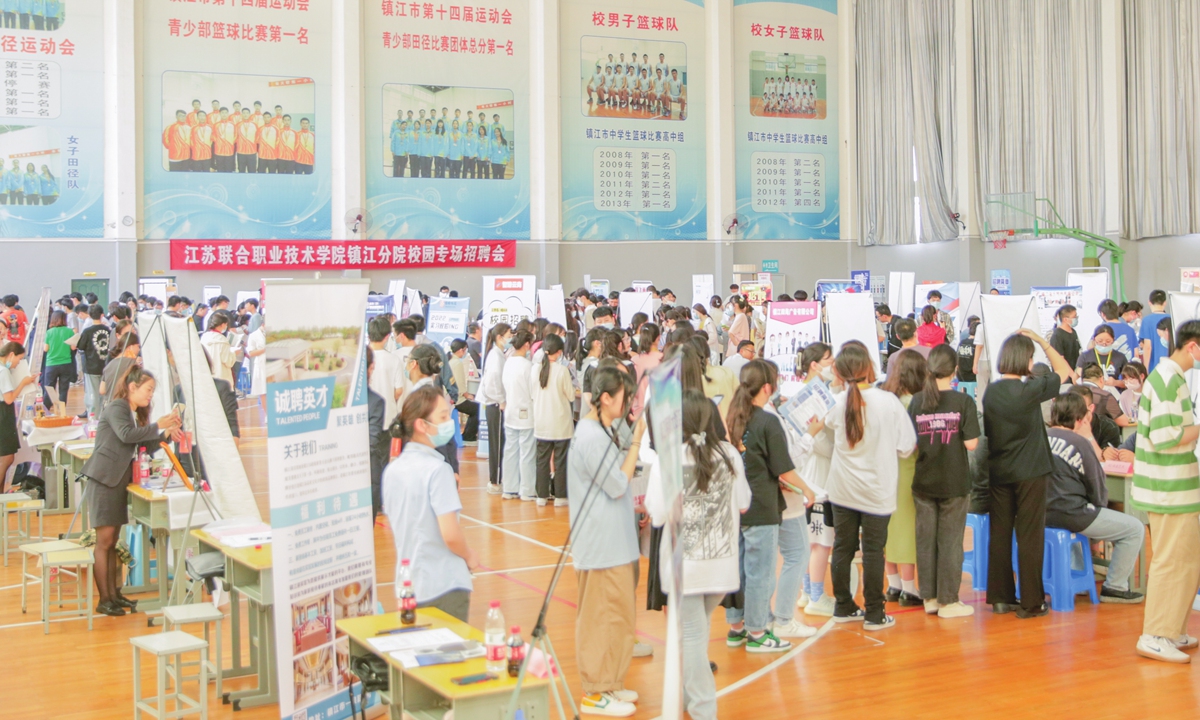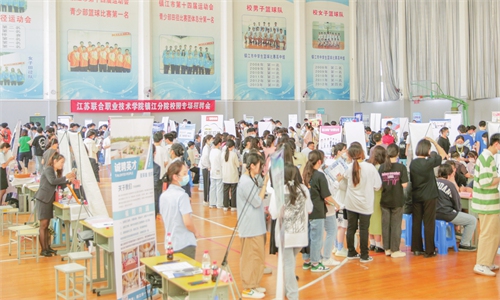China's youth labor force shows stable growth, new job-seekers to hit 16.62 million in 2023

A special campus job fair held at Zhenjiang Vocational Technical College on June 2, 2022, aiming to boost employment of new graduates and facilitate the resumption of work for local companies. Photo: IC
China has the largest population and labor force among developing countries, with the demographic of young workers showing stable growth. This year, 16.62 million new workers need to find jobs in urban areas, the largest number in years, a Chinese official said on Thursday.
"According to statistics, China's working-age population, or people aged between 16 and 59, declined to 876 million at the end of 2022, after reaching a peak of 920 million. However, the fall is only a slowdown within the high-level supply of labor," Yu Jiadong, vice minister of Human Resources and Social Security, told a press conference, in response to a question about the impact of the country's population decline on its labor supply.
He attributed the situation to the rapid fall in the number of aged workers, while the number of young workers is still showing stable growth.
It's calculated that there are about 16.62 million new working-age people who need to find jobs in urban areas in 2023, the highest in years, Yu said, noting that China still faces employment pressure.
As the number of fresh college graduates is expected to reach a record 11.58 million this year, the vice minister highlighted work to help them find jobs as a top priority.
The authorities will refine policies that help graduates find jobs or start businesses, while expanding recruitment at state-owned enterprises, public institutions and primary-level projects.
Graduates will also be encouraged to seek jobs at small and medium-sized enterprises and grassroots organizations in rural areas, Yu said.
China will provide subsidies to encourage enterprises to create jobs, enhance services and training, and offer personalized assistance for graduates who have difficulty finding jobs, according to Yu.
At the same conference, Minister of Human Resources and Social Security Wang Xiaoping said the country's overall employment situation was stable in the first two months of this year and was also better than expected.
"This year's employment has made a good start," Wang said. Unlike previous years, migrant workers from rural areas left home earlier to find jobs and enterprises started recruitment earlier, Wang said, noting that 46,000 job fairs of all kinds had been held by the end of February, providing 32 million jobs.
Cao Heping, an economist at Peking University, expressed full confidence for the country's labor supply over the next five years, saying that the demographic dividend persists.
By comprehensively improving the quality of talent and stepping up efforts to identify top innovation talent, the demographic dividend will be turned to the dividend of qualified personnel.
Meanwhile, the decline in population in turn will force science and technological innovation and industrial structure optimization, according to Cao.
Cao suggested promoting the development of new industries and businesses such as the sharing economy, which have become drivers of China's economic growth and job creation.
He told the Global Times that GDP may grow 6-6.5 percent in 2023, assuming that there's no significant escalation in the Russia-Ukraine conflict and US-led unilateralism.
Chinese consumers' expectations could gradually recover after the optimization of COVID-19 measures, and the country's digital economy maintains healthy development.
Global Times



